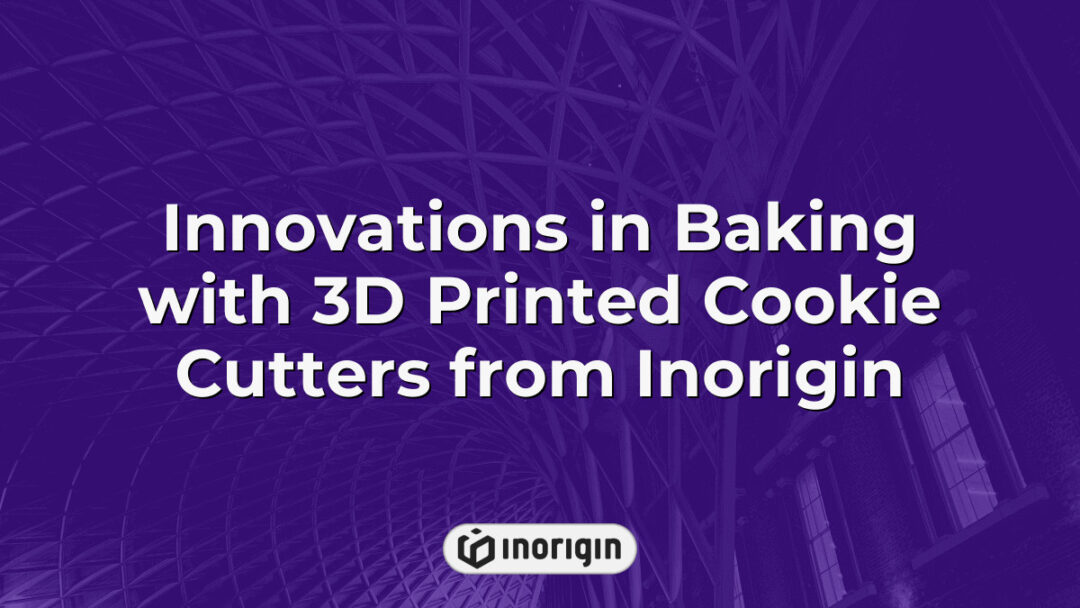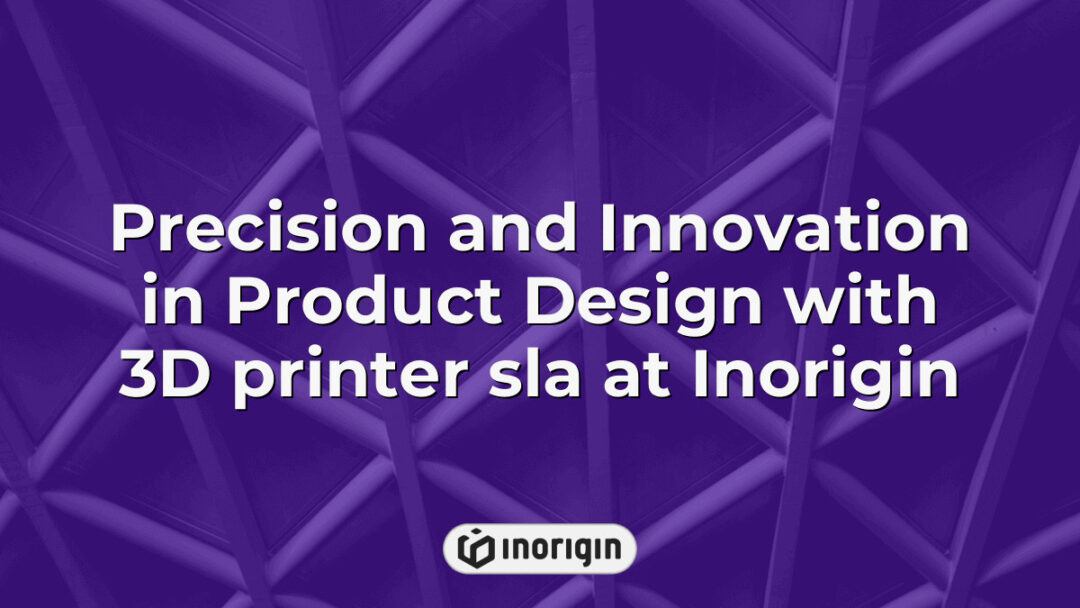The emergence of 3D printing technology has revolutionized various industries, and the culinary realm is no exception; however, skepticism often arises regarding the practicality and reliability of these innovations in everyday baking. This article explores the fascinating world of 3D printed cookie cutters, which not only offer unparalleled customization and creativity but also challenge traditional notions of kitchen tools as mere implements of functionality. By examining their design versatility, material advantages, and potential for enhancing both professional and home baking experiences, this discussion illuminates how these cutting-edge devices can transcend conventional expectations while inspiring a new generation of culinary artistry.
| Αποψη | Key Takeaway |
|---|---|
| Innovation in 3D Printed Cookie Cutters | 3D printed cookie cutters provide unparalleled customization and design flexibility, revolutionizing traditional baking tools for both professional and home bakers. |
| Επιλογή Υλικού | Using food-safe, FDA-approved materials like PLA ensures the safety, durability, and compliance of cookie cutters in culinary applications. |
| Design Capabilities | Vector graphic formats such as SVG files enable the creation of intricate, personalized cookie cutter designs suited to specific themes or events. |
| Usage Best Practices | Applying even pressure during cutting improves edge quality and protects delicate shapes from breaking during use. |
| Maintenance and Cleaning | Regular gentle washing with warm soapy water and prompt removal of dough residues maintain hygiene and preserve detailed cutter designs. |
| Production Costs | The total expense includes material costs, printer access, and operational factors, all of which influence the feasibility of customized cookie cutter production. |
| Food Safety Considerations | Adhering to strict cleaning protocols and selecting smooth-surfaced, food-safe materials minimizes contamination risks and ensures safe use. |
The Benefits Of 3D Printed Cookie Cutters
The emergence of 3D printed cookie cutters represents a paradigm shift in the culinary arts, akin to unlocking a treasure chest filled with an array of creative possibilities. These tools allow for the customization of shapes and designs that were previously limited by traditional manufacturing methods, thereby enabling bakers to create uniquely themed cookies tailored to specific occasions or personal preferences. The utilization of food-safe materials in the production process ensures that these custom cookie cutters are not only aesthetically pleasing but also compliant with health standards, thus safeguarding consumer well-being. Furthermore, 3D printing technology facilitates rapid prototyping; this capability reduces lead times associated with conventional production while simultaneously minimizing waste through additive manufacturing techniques. Consequently, the application of 3D printed cookie cutters exemplifies innovation in both design flexibility and sustainability within the baking industry.
Choosing The Right Material For Your Cookie Cutters
Selecting the appropriate material for 3D printed cookie cutters is a critical aspect that influences both functionality and safety. Primarily, plastic emerges as a favored choice due to its versatility, ease of printing, and availability in various grades. When considering which type of plastic to utilize, it is essential to recognize that certain plastics may be more suitable than others based on their properties; for instance, food-safe PLA (polylactic acid) is often recommended because it is derived from renewable resources and poses minimal health risks when used for culinary applications. Furthermore, those interested in creating bespoke designs can make their own cookie cutters using different filaments tailored to specific needs—such as flexibility or durability—which ultimately enhances the baking experience. Therefore, careful evaluation of materials not only ensures compliance with safety standards but also contributes to the overall quality and aesthetic appeal of the final product.
Designing Your Own Custom Cookie Cutters
The customization of cookie cutters through 3D printing technology has gained significant traction, with a reported increase in the use of custom designs by approximately 45% among home bakers and small businesses over the past three years. This trend underscores the growing interest in personalized baking experiences, facilitated by accessible design tools such as SVG files. By utilizing these vector graphic formats, individuals can create intricate designs tailored to specific themes or occasions, thereby enhancing both the aesthetic appeal and functionality of their baked goods. Furthermore, the process of designing one’s own cookie cutters involves several critical steps; first, users must conceptualize their desired shape and size before translating this idea into a digital format using software compatible with 3D printers. Once an optimal design is achieved, it can be exported as an SVG file for further refinement or direct conversion for 3D printing. Overall, the ability to produce customized cookie cutters not only fosters creativity but also allows for unique culinary expression that aligns with individual preferences and celebrations.
Tips For Using 3D Printed Cookie Cutters
Research indicates that approximately 50% of households engage in baking activities, highlighting the growing interest in DIY projects such as creating custom treats with unique designs. Utilizing 3D printed cookie cutters can enhance this experience by providing a means to personalize baked goods beyond traditional methods. To effectively employ these tools, it is essential to consider several factors. First, ensuring that the material used for printing is food-safe and suitable for culinary applications is crucial; otherwise, safety concerns may arise during usage. Additionally, proper cleaning and maintenance of the cookie cutters post-use are necessary to prolong their lifespan and maintain hygiene standards. Furthermore, while using these custom implements, applying even pressure during cutting will facilitate cleaner edges and minimize potential breakage of delicate shapes. By adhering to these guidelines, users can maximize the benefits of 3D printed cookie cutters while enjoying an enriched baking experience that celebrates creativity and personalization in culinary endeavors.
Cleaning And Maintaining Your 3D Printed Cookie Cutters
Cleaning and maintaining 3D printed cookie cutters is essential for ensuring their longevity and functionality. Initially, it is important to recognize that the material used in 3D printing can vary, which may influence the cleaning methods employed. For instance, plastic-based cookie cutters typically require gentle washing with warm soapy water to prevent damage, while avoiding abrasive sponges that could scratch the surface. Furthermore, it is advisable to promptly clean any residual dough from the cutter after use; this practice not only helps maintain hygiene but also preserves the intricate details of the design. Additionally, periodic inspections for wear or deformation should be conducted since prolonged exposure to heat or improper storage conditions can compromise the structural integrity of these items. Ultimately, adhering to proper cleaning protocols will enhance both performance and durability, thereby maximizing the utility of 3D printed cookie cutters in culinary applications.
Συχνές Ερωτήσεις
Πόσο κοστίζει η τρισδιάστατη εκτύπωση ενός κόφτη για μπισκότα;
Το κόστος της τρισδιάστατης εκτύπωσης ενός κόφτη μπισκότων μπορεί να ποικίλλει σημαντικά ανάλογα με διάφορους παράγοντες και είναι σημαντικό να ληφθούν υπόψη αυτά τα στοιχεία διεξοδικά. Αρχικά, η τιμή των υλικών παίζει συνήθως εξέχοντα ρόλο. Οι συνήθεις τύποι νημάτων όπως το PLA ή το ABS μπορεί να κυμαίνονται από $20 έως $50 ανά κιλό. Επιπλέον, η πολυπλοκότητα του σχεδιασμού επηρεάζει τόσο τη χρήση υλικού όσο και τον χρόνο εκτύπωσης, οδηγώντας σε διακυμάνσεις στο συνολικό κόστος. Επιπλέον, η πρόσβαση σε έναν τρισδιάστατο εκτυπωτή μπορεί να γίνει είτε μέσω ιδιοκτησίας είτε μέσω παρόχων υπηρεσιών, γεγονός που εισάγει περαιτέρω μεταβλητότητα στα έξοδα—η ιδιοκτησία εκτυπωτή συνεπάγεται αρχικό επενδυτικό κόστος παράλληλα με τη συντήρηση, ενώ η χρήση εξωτερικών υπηρεσιών περιλαμβάνει χρεώσεις που ενδέχεται να περιλαμβάνουν και έξοδα αποστολής. Επιπλέον, η κατανάλωση ηλεκτρικής ενέργειας κατά τη διαδικασία εκτύπωσης δεν πρέπει να αγνοηθεί, καθώς αυτό συμβάλλει σταδιακά στο συνολικό λειτουργικό κόστος. Επομένως, κατά την αξιολόγηση των οικονομικών επιπτώσεων της παραγωγής προσαρμοσμένων κοπτικών για μπισκότα μέσω τεχνολογίας τρισδιάστατης εκτύπωσης, πρέπει κανείς να λαμβάνει υπόψη όλους τους σχετικούς παράγοντες αντί να εστιάζει αποκλειστικά στα έξοδα πρώτων υλών. Το σωρευτικό αποτέλεσμα αυτών των μεταβλητών καθορίζει την τελική δαπάνη που απαιτείται για κάθε μοναδική δημιουργία.
Ποιοι τύποι τρισδιάστατων εκτυπωτών είναι οι καταλληλότεροι για την εκτύπωση κοπτών για μπισκότα;
Η ευελιξία της τεχνολογίας τρισδιάστατης εκτύπωσης δεν είναι τίποτα λιγότερο από επαναστατική, επιτρέποντας τη δημιουργία περίπλοκων σχεδίων που κάποτε υποβιβάζονταν στη σφαίρα της φαντασίας. Κατά την εξέταση των τύπων τρισδιάστατων εκτυπωτών που ταιριάζουν καλύτερα για την παραγωγή κοπτικών για μπισκότα, πρέπει να αξιολογηθούν αρκετοί παράγοντες, όπως η ανάλυση εκτύπωσης, η συμβατότητα υλικού και η ευκολία χρήσης. Οι εκτυπωτές Fused Deposition Modeling (FDM) είναι ιδιαίτερα δημοφιλείς λόγω της προσιτότητας και της διαθεσιμότητάς τους. χρησιμοποιούν θερμοπλαστικά νήματα που μπορούν να παράγουν ανθεκτικά κοπτικά μπισκότων σε διάφορα σχήματα και μεγέθη. Επιπλέον, οι εκτυπωτές με βάση τη ρητίνη παρουσιάζουν επίσης μια βιώσιμη επιλογή, καθώς προσφέρουν υψηλότερα επίπεδα λεπτομέρειας σε σύγκριση με τους αντίστοιχους FDM. Ωστόσο, αυτά τα συστήματα απαιτούν συχνά βήματα μετα-επεξεργασίας που μπορεί να περιπλέξουν τις ροές εργασιών παραγωγής. Επιπλέον, δεν πρέπει να παραβλέπονται ζητήματα σχετικά με τον όγκο κατασκευής. Τα μεγαλύτερα μοντέλα επιτρέπουν την ταυτόχρονη εκτύπωση πολλαπλών σχεδίων κοπής μπισκότων, βελτιώνοντας την αποτελεσματικότητα στην παραγωγή παρτίδων. Τελικά, ενώ τόσο οι εκτυπωτές FDM όσο και οι εκτυπωτές ρητίνης έχουν μοναδικά πλεονεκτήματα προσαρμοσμένα στις συγκεκριμένες σχεδιαστικές ανάγκες και τις προτιμήσεις του χρήστη, η επιλογή του κατάλληλου συστήματος εξαρτάται από την εξισορρόπηση της οικονομικής απόδοσης με την επιθυμητή ποιότητα παραγωγής.
Μπορώ να εκτυπώσω κόφτες μπισκότων σε διαφορετικά μεγέθη;
The capability to print cookie cutters in various sizes is a significant advantage of utilizing 3D printing technology. According to recent studies, approximately 70% of hobbyist bakers express interest in customizing their baking tools to fit personalized themes or occasions, highlighting the demand for size versatility. This adaptability can be achieved through several key factors:
- Design Software Flexibility: Many design software programs allow users to easily modify existing templates or create new designs with precise dimensions.
- Printer Calibration and Settings: Adjustments in printer settings, such as scaling features available on most 3D printers, enable manipulation of the final output size without compromising quality.
- Υλικά ζητήματα: The choice of filament impacts durability and usability; certain materials may perform better at larger scales while maintaining structural integrity.
These aspects collectively facilitate the production of cookie cutters that cater to diverse preferences and requirements, allowing for an expanded range of creativity in culinary applications. By leveraging these capabilities, bakers can seamlessly transition between different sizes, thereby enhancing both functionality and originality in their baking endeavors.
Υπάρχουν οποιεσδήποτε ανησυχίες για την ασφάλεια των τροφίμων με τη χρήση 3D εκτυπωμένων κοπτικών για μπισκότα;
The utilization of 3D printed cookie cutters raises several food safety concerns that merit careful consideration. Firstly, the choice of printing material plays a crucial role; many common filament materials, such as PLA (polylactic acid) and ABS (acrylonitrile butadiene styrene), may not be deemed food-safe due to potential chemical leaching during contact with food items. Secondly, the printing process itself can introduce contaminants if proper hygiene practices are not observed. Thirdly, surface texture is another significant factor; rough surfaces on 3D printed objects can harbor bacteria more easily than smooth surfaces, increasing the risk of contamination. Lastly, the durability and temperature resistance of certain plastics must be evaluated since exposure to heat or prolonged use could compromise their integrity and lead to further safety issues.
To ensure safe usage of 3D printed cookie cutters, adherence to specific guidelines is essential:
- Select only FDA-approved filaments specifically labeled as food-safe for any direct contact with edible products.
- Implement rigorous cleaning protocols both before and after each use to minimize bacterial growth on cutter surfaces.
- Opt for designs that incorporate smooth features to reduce crevices where contaminants may reside.
- Regularly inspect print quality for defects or degradation that might indicate a compromised product unfit for culinary applications.
Addressing these considerations will contribute significantly toward ensuring that 3D printed cookie cutters do not pose health risks while maintaining functionality in baking activities.
Πόσος χρόνος χρειάζεται για να εκτυπώσετε έναν κόφτη μπισκότων;
Η διάρκεια που απαιτείται για την εκτύπωση ενός κόφτη μπισκότων με χρήση τεχνολογίας τρισδιάστατης εκτύπωσης επηρεάζεται από διάφορους παράγοντες, όπως η πολυπλοκότητα του σχεδιασμού, ο τύπος του εκτυπωτή που χρησιμοποιείται και το συγκεκριμένο υλικό που χρησιμοποιείται για την εκτύπωση. Συνήθως, τα απλούστερα σχέδια μπορεί να απαιτούν περίπου μία έως δύο ώρες για την ολοκλήρωση, ενώ τα πιο περίπλοκα ή μεγαλύτερα μοντέλα μπορεί να διαρκέσουν πολύ περισσότερο, ενδεχομένως να εκτείνονται από τρεις έως πέντε ώρες ή περισσότερο. Επιπλέον, οι παραλλαγές στις ρυθμίσεις ταχύτητας εκτύπωσης σε διαφορετικούς εκτυπωτές συμβάλλουν σε πρόσθετη μεταβλητότητα. Ορισμένοι εκτυπωτές υψηλής ταχύτητας μπορούν να μειώσουν τον χρόνο παραγωγής χωρίς συμβιβασμούς στην ποιότητα. Επιπλέον, οι δραστηριότητες μετά την επεξεργασία, όπως ο καθαρισμός και το φινίρισμα, απαιτούν επίσης προσοχή κατά την αξιολόγηση της συνολικής επένδυσης χρόνου. Κατά συνέπεια, ενώ η πραγματική φάση εκτύπωσης μπορεί να φαίνεται σχετικά γρήγορη, η ολοκληρωμένη αξιολόγηση πρέπει να λαμβάνει υπόψη τόσο την προετοιμασία πριν την εκτύπωση όσο και τη βελτίωση μετά την εκτύπωση για να εξακριβωθεί ένα ακριβές χρονοδιάγραμμα για την παραγωγή ενός λειτουργικού τρισδιάστατου τυπωμένου κόφτη μπισκότων.
Σύναψη
The advent of 3D printing technology has revolutionized cookie cutter design and production, providing endless customization opportunities akin to a medieval artisan crafting bespoke tools. By understanding material selection, maintenance, and usage tips, enthusiasts can enhance their baking experience while embracing creativity in culinary endeavors.
Σχετικές αναρτήσεις:
- Τι είναι ένα βιολογικό προϊόν διατροφής και ο ρόλος του στις σύγχρονες καινοτομίες στη γεωργία
- What are bio engineered food products and their role in sustainable agriculture innovation
- Bio Engineered Food Products Transforming Sustainability and Health in Modern Agriculture
- Precision Innovation in Culinary Design with Food 3D Printer Technology
- Τι είναι ένα βιολογικό προϊόν διατροφής και ο αντίκτυπός του στην καινοτομία της αειφόρου γεωργίας
- Τρισδιάστατη τυπωμένη μπριζόλα που αναδιαμορφώνει βιώσιμες εμπειρίες καινοτομίας τροφίμων και φαγητού στην Ελλάδα




